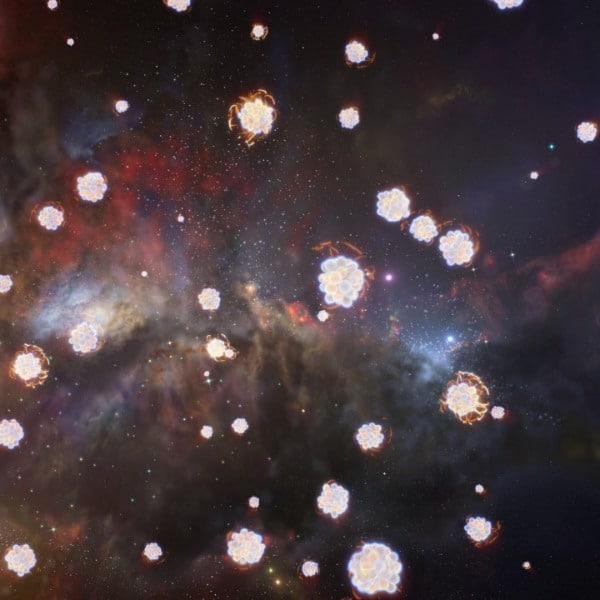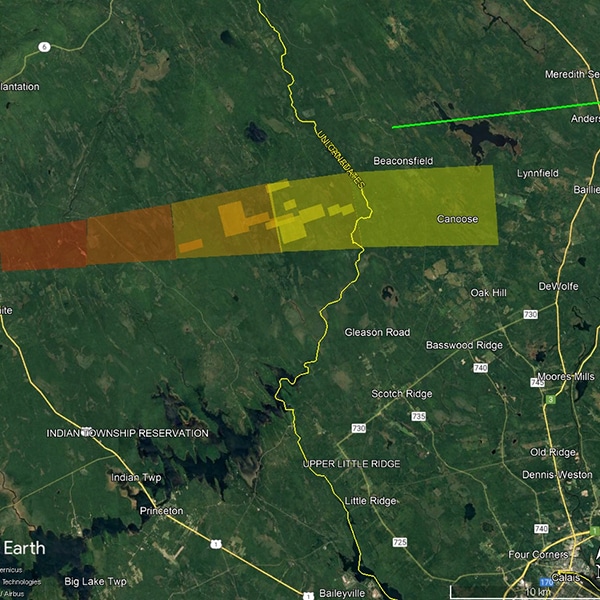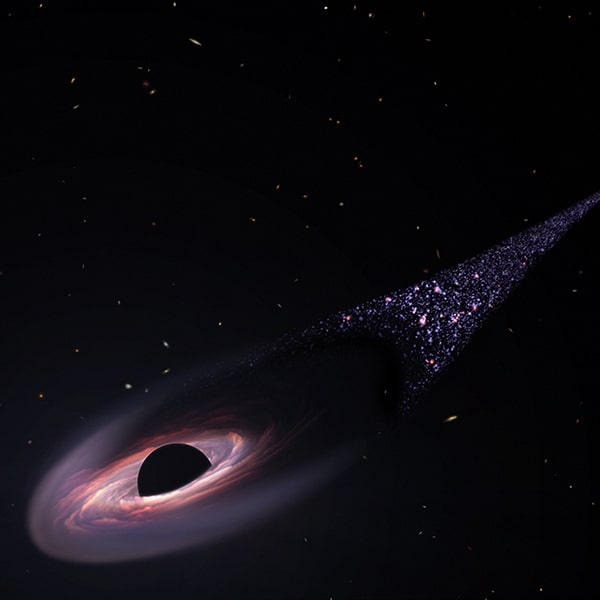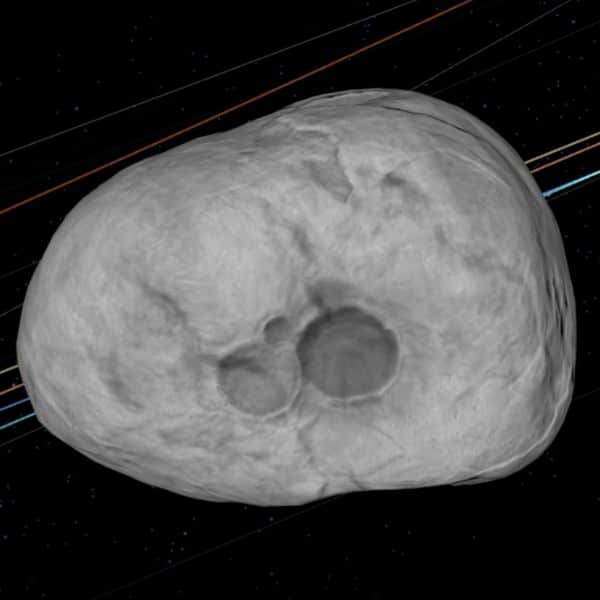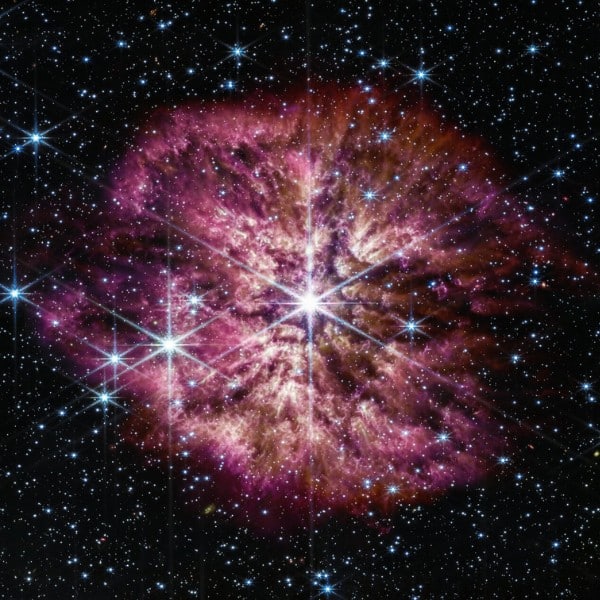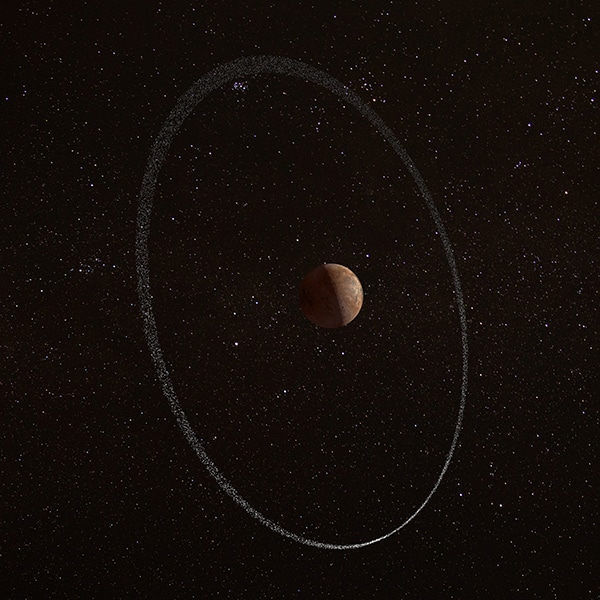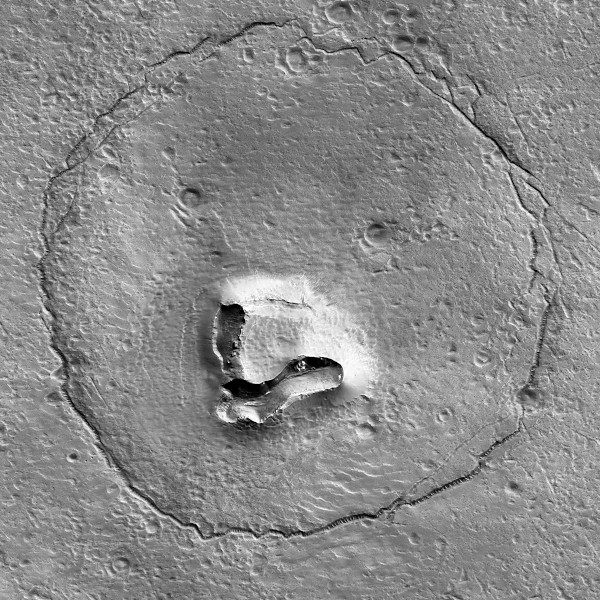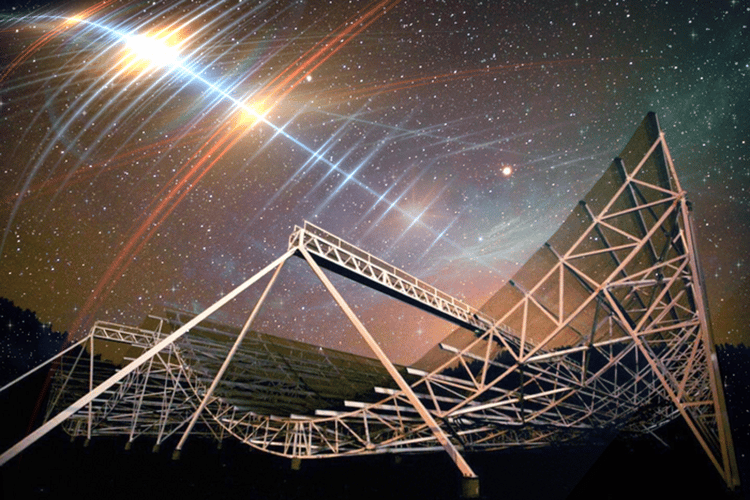
The large radio telescope CHIME that picked up the fast radio burst (FRB), with a visualization of the phenomenon. (Photo: CHIME, background edited by MIT news)
NASA's James Webb Space Telescope has recently rocked the internet. From it's perilous multi-step launch to its stunning images of deep space and planets, the telescope is already revolutionizing astronomy by showing humans just how much we do not yet know about the universe. As scientists continue to push these new frontiers, they discover fascinating things—such as a radio signal from billions of light-years away.
In 2019, researchers at the Dominion Radio Astrophysical Observatory in British Columbia, Canada, picked up a signal of a potential fast radio burst (FRB). These are intense bursts of radio waves in space. They usually last only milliseconds. Many have been discovered by the Canadian Hydrogen Intensity Mapping Experiment, or CHIME, an interferometric radio telescope in British Columbia. Only discovered in 2007, FRBs remain a bit of a mystery.
As described in Nature, this new FRB was exceptional, according to the researchers who discovered it and their collaborators at MIT. It lasted three seconds rather than milliseconds, with bursts at every 0.2 seconds. “Not only was it very long, lasting about three seconds, but there were periodic peaks that were remarkably precise, emitting every fraction of a second—boom, boom, boom—like a heartbeat,” said Daniele Michilli, an MIT researcher at the Kavli Institute for Astrophysics and Space Research. “This is the first time the signal itself is periodic.” It is also the longest FRB on record.
Most FRBs are one-off events, but this signal repeats. Known as FRB 20191221A, scientists postulate that it may be emitted by a radio pulsar or magnetar. The former are neutron stars which emit radio waves as they rotate; the latter emit patterns due to their magnetic field. FRB 20191221A appears to be more than a million times brighter than similar emissions within our galaxy. “From the properties of this new signal, we can say that around this source, there’s a cloud of plasma that must be extremely turbulent,” said Michilli in a statement.
Given its regularity, scientists hope to continue to track and study the radio signals. As the universe expands, the changes in the signal may serve as a clock to measure the rate of the expansion of our known world.
Astronomers at MIT picked up groundbreaking repetitive radio signals from a galaxy billions of light-years from our planet.
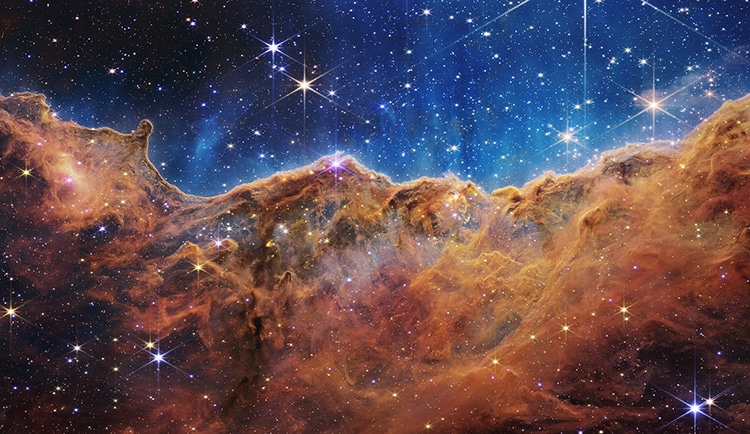
The Carina Nebula as captured by NASA's Webb Telescope. (Photo: NASA, ESA, CSA, STScI)
The pulse of the radio signal almost keeps a “heartbeat” pattern, but its origins are still shrouded in mystery.
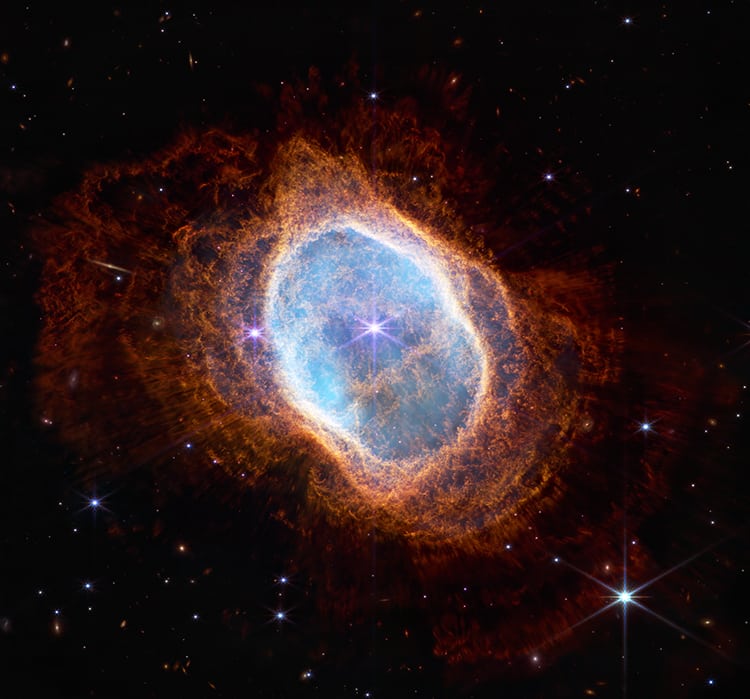
The bright star at the center of NGC 3132, a planetary nebula, as seen. by NASA's Webb Telescope. (Photo: NASA, ESA, CSA, STScI)
h/t: [NPR]
Related Articles:
NASA Reveals Its 2022 Photographers of the Year
NASA Sun Mission Photographs Fiery Solar Eclipse From Space
Interview: After 30 Years, Photographer Reveals Historic Archive of NASA Space Shuttle Images
NASA Lets You Download Thousands of High-Resolution Space Images for Free











































































